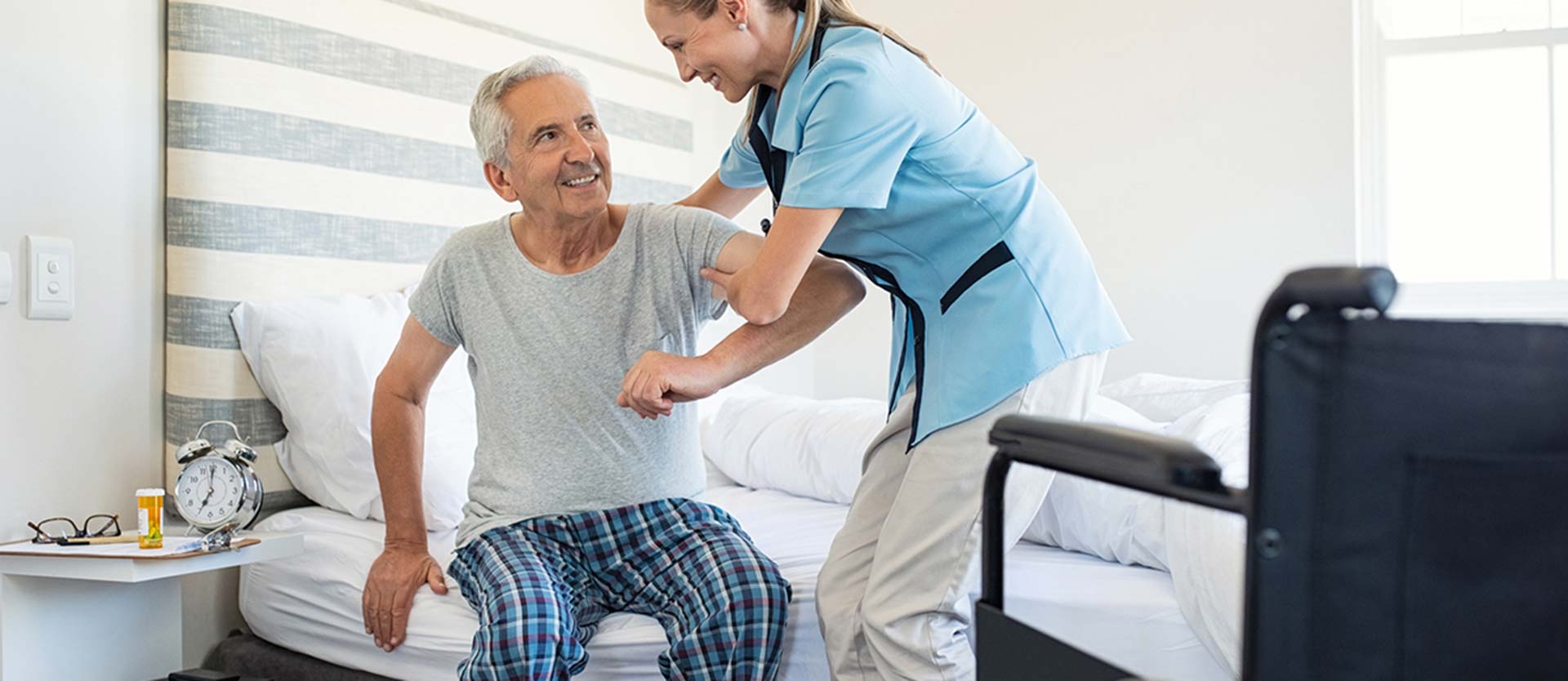Dealing with the aftermath of a stroke can be frustrating for both the survivor and caregiver. Recovering from a stroke requires intense physical, mental and emotional demands.
To regain independence, stroke survivors must be patient and consistently push themselves beyond their expectations. While post-stroke rehabilitation doesn’t cure the effects of a stroke, it’s the best chance patients have to achieve the best possible quality of life.
Fortunately, there are post-stroke rehabilitation centers that offer professional healthcare teams to help you achieve your post-stroke goals in a welcoming and motivating environment.
What is post-stroke rehabilitation?
Post-stroke treatment rehabilitation typically begins within 24 to 48 hours after a stroke, or as soon as the patient is stable. The first stage of recovery depends on the stroke survivor’s circumstances but generally starts in an acute-care hospital.
Following a stroke, the type and degree of disability depend on which area of the brain is damaged. Strokes generally cause five types of disabilities: paralysis or problems controlling movement, sensory disturbances and pain, problems using or understanding language, problems with thinking and memory, and emotional disturbances.
Because many stroke survivors are paralyzed or severely weakened, the first step involves encouraging independent movement, such as changing positions in bed, sitting up, moving from the bed to a chair, standing, bearing weight, and walking with or without assistance.
Post-stroke rehabilitation centers help stroke survivors relearn lost skills and learn new ways of performing tasks — from learning to walk to buttoning a shirt. For example, patients may need to learn how to communicate with caregivers when their ability to speak has been compromised or learn how to bathe and dress using only one hand.
A post-stroke rehabilitation program focuses on carefully directed and repetitive movements, similar to the practice required when learning any new skill such as playing the piano or swinging a tennis racket. High repetition of stroke rehab exercises is the best way for stroke survivors to rebuild their skills after a stroke, regain independence and recover more quickly.
Who is involved with post-stroke recovery and therapy?
Post-stroke rehabilitation involves a team of professionals — physicians, rehabilitation nurses, and physical and occupational speech therapists –— to plan customized rehab programs and help patients achieve their stroke recovery goals.
For many stroke survivors, rehabilitation is an ongoing process to help maintain and refine their skills. Patients may work with specialists for months or even years following a stroke. These professionals thoroughly understand the challenges stroke survivors face and offer compassionate support every step of the way.
Rehabilitation nurses help survivors adjust to life post-stroke. They help patients manage health problems like diabetes and high blood pressure and perform necessary activities of daily living, such as bathing, dressing, toileting and strategies for controlling incontinence. Being able to carry out these basic activities is the first stage in a stroke survivor’s return to independence.
Rehab nurses also educate patients about routine healthcare, such as following medication schedules, skin care, and moving from the bed into a wheelchair. Additionally, rehabilitation nurses offer caregiver training and work with survivors to help reduce risk factors that could lead to another stroke.
Physical therapists treat problems related to motor and sensory impairments, with an emphasis on movement, balance, and regaining the use of stroke-impaired limbs. They design individualized programs based on the stroke survivor’s strength, endurance, range of motion, gait and sensory deficits. Targeted exercises help strengthen muscles for walking, standing and other activities.
Occupational therapists also help improve motor and sensory abilities, as well as increasing patient safety, removing barriers and helping facilitate physical functioning. They help survivors relearn skills such as personal grooming, preparing meals, dressing, writing, housecleaning and driving. Occupational therapists also provide survivors ways to compensate for limited abilities, such as swapping out clothing buttons with hooks and loop fasteners, and installing grab bars in bathrooms.
Speech-language pathologists assist stroke survivors with talking, reading and writing, as well as improving their ability to swallow or develop alternative ways of communicating. They also work with patients on post-stroke coping mechanisms such as problem-solving and social skills and developing strategies to circumvent language disabilities. Post-stroke rehabilitation exercises may include repeating the therapist’s words, reading and writing activities, or practicing following directions.
Senior rehabilitation at Presbyterian Village North
The Transitional Rehabilitation Center at Presbyterian Village North offers short-term rehabilitation to help seniors transition from hospital to home after a stroke, illness or surgery. We combine advanced therapy programs, personalized care plans, and 24-hour skilled nursing to provide the very best in short-term rehabilitation, seven days a week.
Our inpatient residents have access to housekeeping and dining services, group and individualized activities, community common areas and courtyards, pet therapy, classes and entertainment, spa and salon services, worship activities, and post-discharge follow-up.
Senior rehabilitation amenities include private suites with en suite baths, smart TVs with streaming services available, spacious dining areas, family suites, and Novaerus airborne pathogen control technology to safeguard against airborne viruses, bacteria and allergens.
The Village also supports strength training, fitness-based rehabilitation and aquatic therapy for seniors. Our expansive therapy gym has state-of-the-art equipment for strength and cardio training, and private rooms for individual treatment. We also have an aquatic therapy pool and certified aquatic therapists.
Services can also include:
- Physical, occupational and speech therapies
- LSVT treatment approach for Parkinson’s disease
- Certified lymphedema treatment
- PRN respiratory therapy
- Bariatric therapy
Our HydroWorx 3500 therapy pool and underwater treadmill are the same brand of equipment used by NASA, the U.S. Navy Seals, and elite athletes such as the NBA’s Dallas Mavericks. Other advanced treatments include electrical stimulation therapy, ultrasound therapy, and intense stroke recovery programs utilizing Bioness® technology.
Not a resident of The Village? No problem. Short-term rehabilitation (including post-stroke services) is available to the public. Get some of the best full-spectrum therapeutic care for post-stroke rehabilitation that Dallas offers. Explore our services.

